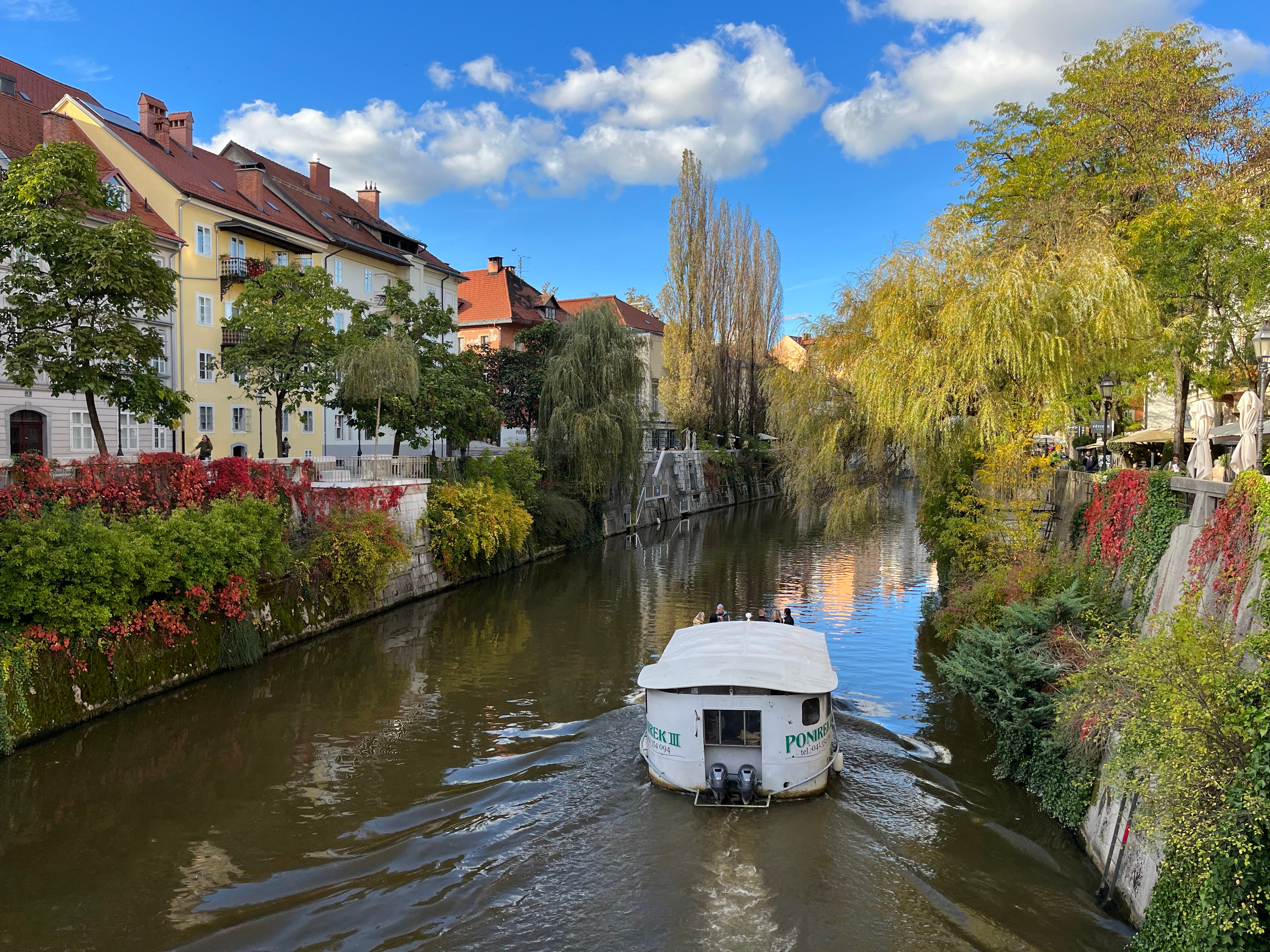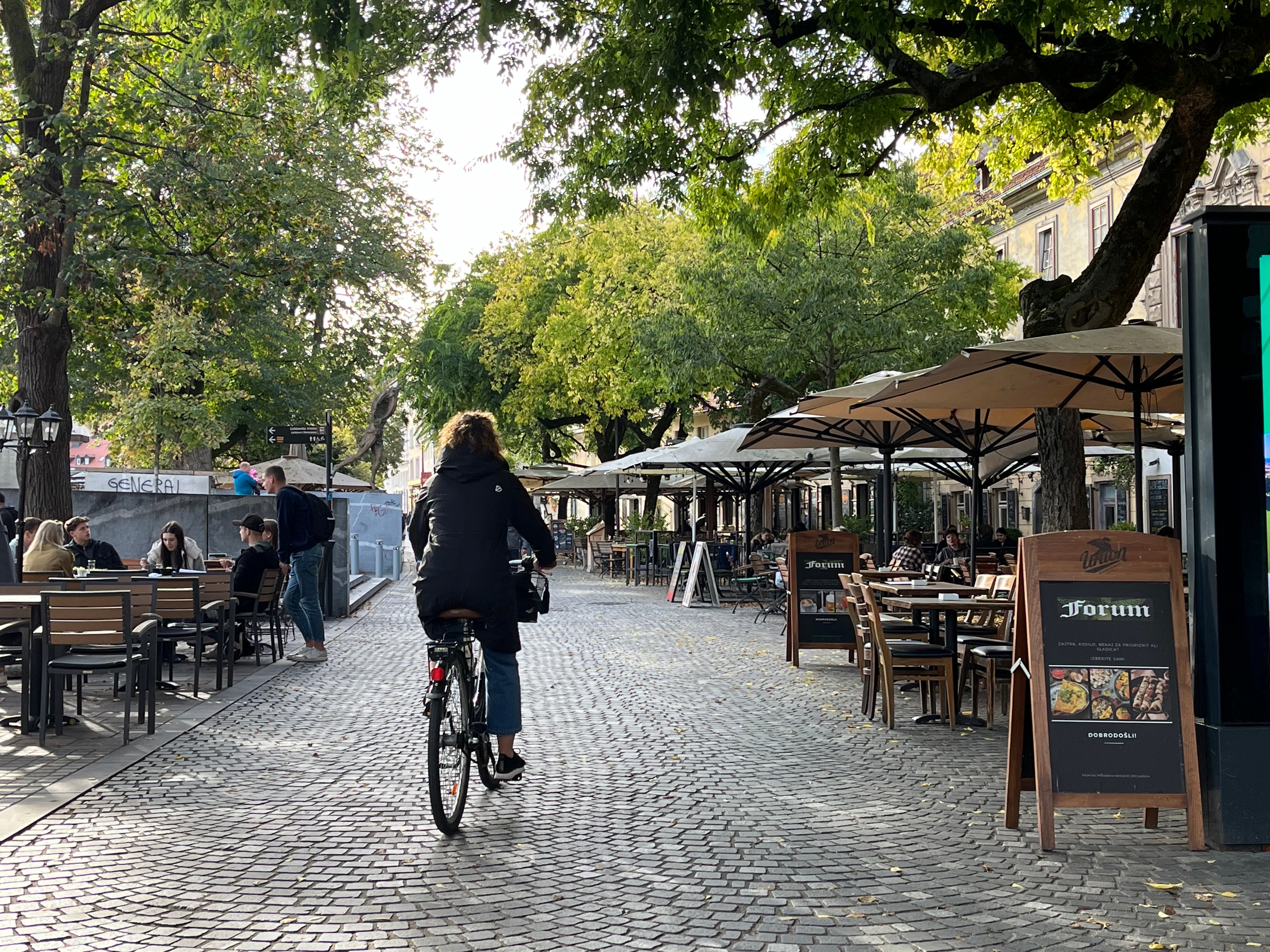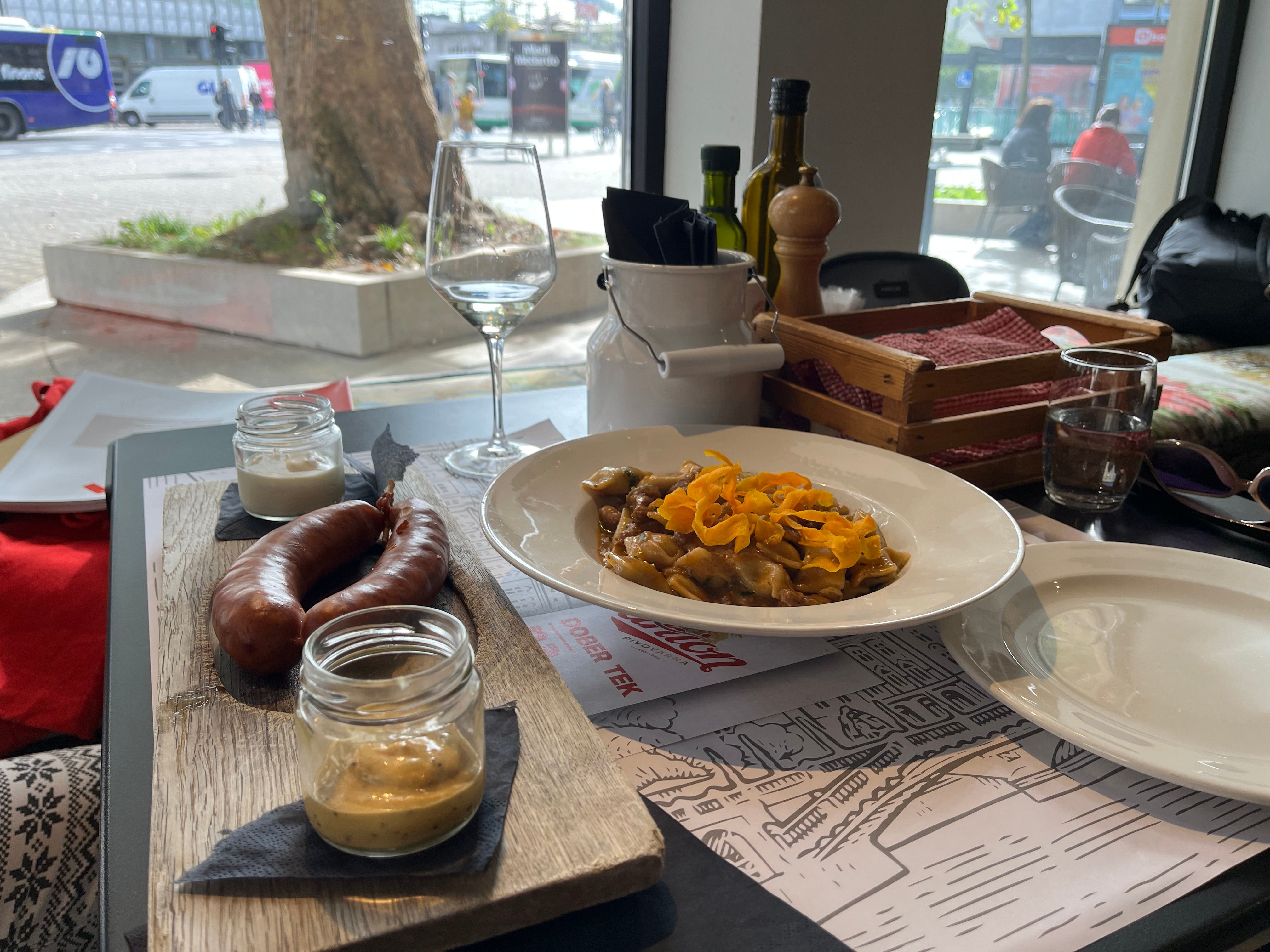The Independent's journalism is supported by our readers. When you purchase through links on our site, we may earn commission.
Green journey to a green city – all aboard the sleeper train to Ljubljana, Slovenia’s charming capital
As travellers switch to slower travel and choose different ways to reduce their carbon footprint, new night train routes are opening across Europe. Yvette Cook hops on the Stuttgart to Slovenia offering

Your support helps us to tell the story
From reproductive rights to climate change to Big Tech, The Independent is on the ground when the story is developing. Whether it's investigating the financials of Elon Musk's pro-Trump PAC or producing our latest documentary, 'The A Word', which shines a light on the American women fighting for reproductive rights, we know how important it is to parse out the facts from the messaging.
At such a critical moment in US history, we need reporters on the ground. Your donation allows us to keep sending journalists to speak to both sides of the story.
The Independent is trusted by Americans across the entire political spectrum. And unlike many other quality news outlets, we choose not to lock Americans out of our reporting and analysis with paywalls. We believe quality journalism should be available to everyone, paid for by those who can afford it.
Your support makes all the difference.“Why would I fly when I can sleep on a train and enjoy the journey?” asks Nora, a construction manager from Stuttgart, who is on her way to visit her family. Lying in our bunkbeds, we’re sharing a ladies-only compartment, or couchette, aboard the Lisinskitrain. We’re discussing the fun of travelling overnight, from meeting interesting people to the changing scenery outside our bedroom window. I’m travelling to understand how Ljubljana, the capital of Slovenia, can be reached in 20 hours from the UK, with brief and enjoyable stops in Paris and Stuttgart.
Our conversation slows as we’re rocked to sleep from the clickety-clack of the train while it snakes around the Swabian Alps. The night passes smoothly and carefree. These sleeping carriages are as comfortable and clean as any in western Europe, with the added hospitality of super-strong coffee, croissants and personal alarm calls. In a little over 11 hours, an eclectic mix of blurry-eyed families, business people and backpackers have travelled through Munich, Salzburg and Bled, to arrive in Ljubljana.
Ljubljana is often described as a fairytale city, with its tales of dragons, its majestic medieval castle and ever-present River Ljubljanica. Within minutes of arriving, I’m ambling along car-free, cobbled streets, embodying the city’s motto of “relax and enjoy”. Chatter and laughter from busy restaurants and bars form the city’s background hum, interrupted only by the cathedral’s bells or a passing cyclist.

I get my first taste of local food at one of the oldest inns in the city, Slovenska Hiša Figovec. “Hiša” means “home”, which is how I feel while I’m there, with piles of books, tapestry cushions and welcoming aromas. Over succulent kranjska klobasa (Carniolan sausage) and idrijski žlikrofi (stuffed dumplings with a creamy beef sauce), Polona, a local who works for the city’s tourist board, tells me about the origins of Slovenia’s vision to be the sustainable tourism destination of choice. “Over 60 per cent of the country is covered in forest, so Slovenians have a connection with nature; it’s in our DNA,” she tells me. It’s part of what prompted the success of Slovenia’s green scheme, which promotes sustainable tourism and has helped the city win a slew of awards, including European Green Capital.
Read more on Slovenia travel:
Walking off my lunch, I’m drawn to the beating heart of the city, Prešernov Trg, a square where streets collide from different directions. It’s where locals covene and buskers play, and where I meet my guide, Simona. She shows me the works of architect Jože Plečnik; he is to Ljubljana what Gaudí is to Barcelona.

Plečnik’s work and way of thinking created harmonious connections between the urban environment and its people, as the city evolved into the capital between the world wars. The design of his Triple Bridge draws people across the river to the town square, while his tree-lined promenades provide the city with arteries between public spaces. Simona points out the beauty of his designs: “Look at how he planted the tall poplars to connect the land to the sky, and the weeping willows to connect the land to the river.”
Plečnik’s legacy is visible around every corner, with many of his works on Unesco’s world heritage list. His lavish covered market, alongside the river, has renaissance-style columns and porticos and could trick you into thinking you’re in Venice for a moment. While the lower levels still serve as a fish market, the upper levels host buzzing cafes which serve struklji (rolled dumplings) and hearty stews.
More than 60 per cent of the country is covered in forest, so Slovenians have a connection with nature; it’s in our DNA
Simona takes me around the open market, which on Saturdays serves as much as a meeting point for friends as it does as a means to buy fresh produce. During the summer, Friday’s “open kitchen” draws in food lovers and occasional top chefs. Slovenia is fast becoming a gastro-destination, and I leave salivating over kras prosciutto and delicate cheeses such as kozobrin.
It’s time to follow Plečnik’s poplars up to Ljubljana castle. As I ride the funicular railway, I get a sense of how green this city is, literally: from Tivoli park to the Kamnik Alps. I arrive in the innards of the renovated castle, admiring how its exposed steel struts providing an elegant blend of traditional and modern. Climbing the maze of ancient walls, I join the castle’s theatrical Time Machine tour, which brings the city’s history alive through the eyes of its historical characters. I’m not usually one for role-play, but this is the most engaging tour I’ve been on in quite some time. Roman soldiers teach me their innovations, a Habsburg emperor explains 500 years of Austro-Hungarian influences and an inmate describes the grim food of the 19th-century prison. And I learn that it was the enlightened mayor, Ivan Hribar, who started Ljubljana’s transformation after the 1895 earthquake, paving the way for Plečnik.

Before I board my sleeper train towards London, I cycle along the river. Behind the willow trees, I understand how Ljubljana’s past is shaping its future. Vast interior spaces of former sugar refineries and bicycle factories are being renovated into creative hubs; Cukrarna showcases Slovenian contemporary art, while Centre Rog helps artists turn ideas into products. It’s solidified my view that Slovenia feels proud of its Balkan heritage, yet always looks forward.
Look at how he planted the tall poplars to connect the land to the sky, and the weeping willows to connect the land to the river
As the bright red locomotive pulls into Ljubljana station, I search for my compartment and put my backpack onto my bunkbed, first rummaging for the treat I’d bought for my journey home: prekmurska gibanica, a 10-layer pastry with poppy seeds, cottage cheese, apples and walnuts. As my teeth sink through each layer, it strikes me that this is why Ljubljana has surprised me. I’ve found a city with multiple layers – rich in history, culture and good food – as well as one with pleasingly deep connections between people and the environment.
New sleeper train routes for 2024
Nightjet, run by Austrian rail operator OBB, will launch a three-times weekly service between Berlin and Paris from December 2023, increasing to a daily service from October 2024. Meanwhile, its Brussels-Vienna service will now serve Munich and Salzburg.
European Sleeper’s “Good Night Train” extends its Brussels-Amsterdam-Berlin service to Dresden and Prague, twice a week, from March 2024, and daily from March 2025. The company is looking at opening up routes to Barcelona or Stockholm in the future.
Polish State Railway extends its Warsaw-Vienna sleeper Chopin to Salzburg and Munich.
Midnight Trains, marketed as a hotel on wheels, will be launching its service from Paris to Venice in 2025.
Travel essentials
Getting there and around
Plan your route using seat61.com and book through raileurope.com or thetrainline.com. This trip involved catching the Eurostar from London to Paris, the TGV from Paris to Stuttgart and Croatian Railways from Stuttgart to Ljubljana. Prices start at £125 each way in a four-bed couchette.
Purchase a Ljubljana Card for free travel on public transport, including the funicular railway, electric tourist train and a boat cruise down the River Ljubljana. A 48-hour card costs €44 and includes free access to museums, a two-hour guided tour and bike hire.
Staying there
The B&B Hotel Ljubljana Park is part of Slovenia’s green scheme and promotes itself as the greenest hotel in the city centre. Save 15 per cent if travelling to Ljubljana by public transport, and don’t forget to visit the beehives on its roof terrace.
Yvette’s trip was supported by the Slovenian Tourist Board and Visit Ljubljana
Read more of our best Europe hotel reviews
Join our commenting forum
Join thought-provoking conversations, follow other Independent readers and see their replies
Comments